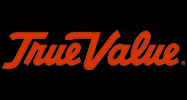Soccer fandom is growing in America; both for Men and Women, especially after the USWNT won their 4th World Cup title over the Netherlands this weekend.
If you work in the sports industry, by now you have heard about the record setting numbers from TV ratings and attendance. But the growth didn’t start with the 2019 Women’s World Cup; it’s been growing for years. In the last two years, women’s’ games in the US, Mexico, and Europe have drawn record crowds of more than 30,000, topped by Barcelona and Atletico Madrid in a league match played in front of 60,739 fans!
The World Cup comes around every 4 years and every 4 years we keep asking ourselves what it’s going to take to continue to grow the sport. How can women’s soccer capitalize on the success of a two month period for the next 4 years until the next tournament?
The USWNT is the global leader in women’s soccer so for this exercise we’ll just focus on the growth domestically.
STABILITY
Each member of the USWNT plays professionally in the National Women’s Soccer League (NWSL). The league has nine teams: The Chicago Red Stars; North Carolina Courage (Raleigh), the Portland Thorns, Sky Blue FC (New Jersey), Washington Spirit (D.C.); Houston Dash, Orlando Pride, Reign FC (Seattle) and Utah Royals FC (Salt Lake City).
The NWSL was founded in 2012 and is on stable ground, but there have been numerous predecessors who did not find sustainability including: Women’s Professional Soccer (founded 2007, folded 2012), Women’s United Soccer Association (founded 2000, folded 2003). Not to mention countless individual team franchises that have come and gone.
I think the solution to this problem is right there in front of us. Currently, four of the existing nine NWSL teams are affiliated with MLS franchises: Orlando, Houston, Portland and Real Salt Lake.
An expanded relationship with the MLS would give Women’s Soccer the stability that it desperately requires.
INFRASTRUCTURE
There are currently 17 soccer specific stadiums in the MLS with plans to add 5 more as the league expands. MLS teams are also building state of the art training facilities and academies. Giving the women’s teams access to these grounds is a no brainer.
If you want to be the best you need to train like the best.
CORPORATE SPONSORSHIP & TV RIGHTS
Soccer United Marketing (SUM) is the marketing arm of MLS and the exclusive marketing partner with the United States Soccer Federation (USSF), the governing body that oversees both the US Men’s and Women’s Soccer teams.
SUM sells corporate partnerships and handles negotiations for TV broadcasts for the League and the national teams. Opening the door to include NSWL games into these packages not only provides additional value for advertisers but also allows SUM to sell larger (read as “more expensive”) packages. In the end you have higher revenues trickling into the women’s game at the League level but you’ll also see expanded opportunities for individual players as sponsors will want to use top athletes in their marketing campaigns.
So where does women’s soccer go from here? I think we can safely say it’s only going to get bigger. While the USWNT will continue to churn out star players and trophies, the rest of the world is getting better. The future is exciting.
Stay up to date with AdSport. Follow us on LinkedIn!










